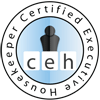Whether made of natural or synthetic materials, upholstered furniture typically can withstand a thorough vacuuming with an upholstery (or brush) attachment. Vacuuming is necessary on a regular basis to prevent dust and soil from becoming ground into the fabric. Incorrect methods used in wet cleaning can lead to color bleeding, spotting, fading or other damage that’s permanent or difficult to correct.
To prevent spills from becoming stains, blot them up as soon as possible using a white cloth or white paper towel. Avoid using any colored cloths or towels, which may bleed into the damp fabric and leave a stain.
When removing stains or soils, you have three choices:
- By hand: Spray on commercial (or homemade) upholstery cleaner — sparingly! — and gently blot with a cloth or sponge, rinsing with a clear-water spray, then dry the furniture by blotting up the moisture. This work takes a lot of time, and it may not yield good results, particularly on natural fabrics that have a tendency to shrink, spot or yellow. These fabrics include cotton, wool, linen and silk. Rayon, a synthetic fiber, is also highly vulnerable to these hazards.
- By machine: Use a rented or purchased “steam cleaner,” more accurately called a wet-extraction machine. Machines are time-consuming to set up, use and clean, and the same pitfalls of hand cleaning apply.
- By a professional: “Professional cleaning may seem expensive, but it’s far less costly than replacing a soiled piece of furniture,” say the editors of Consumer Reports in How to Clean and Care for Practically Anything. Contractors who do this work are listed in the yellow pages under “carpet cleaners” or “upholstery cleaners.” Be prepared to ask questions about procedures, obtain firm estimates and check references before hiring a cleaning company.
The decision to do it yourself or hire a professional is a judgment call. Less-than-perfect results won’t be as bothersome when it’s that old couch in the den versus the centuries-old family heirloom in the living room, for example.
Synthetic fibers such as nylon, polyester, olefin and acetate generally stand up to wet cleaning better than natural materials, and they’re less prone to shrinking, spotting and yellowing.
In recent years, furniture manufacturers began labeling furniture with standardized cleaning codes. This code may appear on a cushion, a fabric sample or on the retail tag attached to the piece. The letter codes are as follows:
W: Use water-based cleaners only.
S: Use solvent-based cleaners only or dry clean.
W-S: Either water or solvent may be used.
X: Clean only by vacuuming – don’t use either water or solvent.
The cleaning codes indicate only colorfastness, according to Claudia Ramirez, former vice president of the Association of Specialists in Cleaning and Restoration. “The codes don’t have anything to do with shrinkage or browning, two of the most common problems with cleaning upholstery, especially natural fibers,” says Bredenberg.
In any attempt at do-it-yourself upholstery cleaning — particularly where a care code cannot be found — pre-test for colorfastness first. Apply a couple of drops of water to an inconspicuous spot on the fabric and blot immediately with a white cloth or paper towel. If none of the color bleeds, perform the same test with the cleaning solution you intend to use. If the cloth stays white, proceed with wet cleaning. Otherwise, call a professional. Don't over-wet the fabric, which may cause discoloration and promote growth of mildew or mold.
Furniture upholstery should be dried in less than 24 hours. Speed drying by opening windows and directing at least one fan toward the piece.
Commercial upholstery cleaning solutions are sold at home centers and hardware and retail stores. For an inexpensive homemade cleaner, mix one-half teaspoon (2.5 ml) of hand dishwashing liquid per quart (945 ml) of water. Whatever wet cleaner you use, be sure to rinse and blot or extract all of the detergent out of the fabric. Otherwise, remaining residue will attract dirt, which in turn will hasten and complicate the next cleaning.
Additional reference:
Don Aslett, The Cleaning Encyclopedia: Your A to Z Illustrated Guide to Cleaning Like the Pros.









